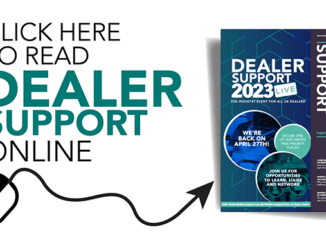
CEO Karlin Sloan explains why neither fight nor flight is a particularly useful response for a leader
CREDIT: This is an edited version of an article that originally appeared on Management Today
During the COVID-19 pandemic I’ve seen leaders who were able to stay cool and calm in the face of threats – and others who were derailed. The difference lies in how they handle fear – both their own, and that of their team and organisation.
Fear is an adaptive response designed to protect us from danger; it’s our emotional warning system that something is a threat, shifting our brains from executive function to survival mode, where we make split-second decisions in our midbrain. Adrenaline, cortisol and blood pressure rise to help us meet a situation our body perceives as putting us in critical danger.
This response is a hardwired evolutionary adaptation that can serve us well when we are under immediate physical threat; it’s the part of us that slams on the brakes when we see a car suddenly stop in front of us, or runs when an animal attacks, but it’s also something that can sabotage our best thinking, decision-making, and capacity to innovate during challenging times.
Think of a time when you experienced fear or anxiety. Was your natural response to freeze, to fight, or to run? You might remember becoming tense, feeling short of breath, your heart racing, ready to react quickly. We all have reactive patterns that protect us from immediate physical danger; ultimately, such patterns subvert strong leadership and management.
Analysis paralysis
A leader operating from the freeze response may have ‘analysis paralysis’ and not want to make critical decisions. To fight as a leader could look like defensiveness, losing control emotionally and snapping at others who are on the same team. The ‘flight’ response might mean literally leaving the organisation or role, or distancing from responsibility, rather than recognising the importance of stepping up.
These fear-based behaviours are damaging not just to your reputation, but to the whole of the business. It is in the most stressful moments that leaders are most important. In a crisis, others look to you for answers, for a calm mind and a strong perspective; they want to hear that they’re part of something larger than themselves, that you’ve got their backs, that we’re all for one and one for all, and that we will help each other get through the crisis and, potentially, become stronger for it.
Crisis leadership requires us to adopt two important perspectives which depend upon transcending our fear response:
- a strategic mindset;
- a focus on employee engagement, productivity and wellbeing.
Disengaging fight or flight
A strategic mindset may seem impossible when we ‘fight, flight or freeze’, as brain chemistry takes away our capacity for reasoning, but there are ways to reconnect with our rational, empathetic mind.
Dr Herbert Benson pioneered the idea that the fight or flight response can be disengaged by another, opposing, hardwired process he called the ‘relaxation response’. There are any number of ways to activate this response – visualisation, meditation, stretching, Tai Chi or other exercise.
The easiest way is to sit quietly and focus on the simple act of breathing in and out. Envision your muscles relaxing and breathe through your nose. You can have your eyes closed or open, but focus on the breath for at least five minutes; breathe easily and naturally. There is nothing to accomplish, just sit. When we are in a state of hyper-alertness and reactivity, it can be as simple as taking a five-minute break to reset yourself.
Once your body is calmed, and your adrenaline has stopped flooding, you can shift your attention to asking yourself questions. How do we turn the lead of our circumstances into the gold of the future? What impact am I having, and is it the impact I want to have?
Leadership requires us to transcend our own personal fears for the good of the people we lead. It requires leaders to have empathy for colleagues and customers who may be experiencing even deeper levels of fear and stress.
Resilience at work research conducted by my firm shows that senior executives have an overall higher level of resilience and change-readiness than the people they lead; this may bias those in leadership to jump ahead to solutions before their people are ready to hear that message.
However, quelling the fear in others is a critical step for moving through a crisis, and doing so requires us to demonstrate empathy, and to ‘start where they are’, beginning with a message that acknowledges what’s real in the present moment, and then focuses on a positive future vision as a second step.
This simple, two-step, structure goes a long way towards building trust and shifting fear into hope, efficacy, resilience and optimism.



Be the first to comment